Exen D Plus
₨1095
Calcium in the bones, where it belongs
- Ensures Bones Health
- Effective calcium Absorption
- Good for Heart & Kidneys
- Recommended for All Ages
- Reduces Hypertension & diminishes symptoms of PMS
- Description
- Reviews (0)
Description
COMPOSITION:
Each tablet of Exen D Plus contains:
Calcium (Calcium from Natural Origin) …………………….500mg
Vitamin D (Cholecalciferol from Natural Origin) ……….2000 IU
DESCRIPTION:
Exen D is combination product of Calcium (Calcium from Natural Origin) & Vitamin D (Cholecalciferol from Natural Origin). This combination medication is used to prevent or treat low blood Calcium levels in people who do not get enough Calcium from their diets. It may be used to treat conditions caused by low Calcium levels such as bone loss (Osteoporosis), weak bones (Osteomalacia/Rickets), decreased activity of the parathyroid gland (Hypoparathyroidism) and a certain muscle disease (Latent tetany). It may also be used in certain patients to make sure they are getting enough Calcium (e.g. women who are pregnant, nursing or postmenopausal, people taking certain medications such as Phenytoin, Phenobarbital or Prednisone). Calcium plays a vital role and is necessary for normal functioning of nerves, cells, muscles and bones. If there lack calcium in the blood, then the body consumes calcium from the bones, leading to weaker bones. Vitamin D helps body to absorb Calcium and Phosphorus, extremely essential for building and keeping strong bones.
Exen D Plus is a special bone-building formula. It combines Vitamin K2-7, Calcium and Vitamin D all at clinically researched doses in one formulation. Just two tablets or one sachet a day of Exen D Plus is an effective way to protect against Osteoporosis and build stronger bones for the future.
CLINICAL PHARMACOLOGY:
Pharmacodynamics:
Cholecalciferol (Vitamin D) is a Steroid hormone that has long been known for its important role in regulating body levels of Calcium and Phosphorus, in mineralization of bone and for the assimilation of Vitamin A. The clinical manifestations of Vitamin D deficiency are Rickets, which is seen in children and results in bone deformities including bowed long bones. Deficiency in adults leads to the disease called Osteomalacia. Both Rickets and Osteomalacia reflect impaired mineralization of newly synthesized bone matrix and usually result from a combination of inadequate exposure to sunlight and decreased dietary intake of Vitamin D. Common causes of Vitamin D deficiency include genetic defects in the Vitamin D receptor, severe liver or kidney disease and insufficient exposure to sunlight. Vitamin D plays an important role in maintaining Calcium balance and in the regulation of Parathyroid hormone (PTH). It promotes renal reabsorption of Calcium, increases intestinal absorption of Calcium and Phosphorus and increases Calcium and Phosphorus mobilization from bone to plasma.
Calcium carbonate acts by directly increasing Calcium stores within the body. Calcium (Caz‘) plays a vital role in the physiology and biochemistry of organisms and the cell. It plays an important role in signal transduction pathways, where it acts as a second messenger in neurotransmitter release from neurons, contraction of all muscle cell types and fertilization. Many enzymes require Calcium ions as a cofactor, those of the blood clotting cascade being notable examples. Extracellular Calcium is also important for maintaining the potential difference across excitable cell membranes, as well as proper bone formation.
Pharmacology:
Vitamin D is produced in the skin by photochemical conversion of 7-dehydrocholesterol to pre-vitamin D by ultraviolet light. This is followed by non-enzymatic isomerization to Vitamin D. In the absence of adequate sunlight exposure, Vitamin D is an essential dietary nutrient. Vitamin D in skin is converted to 25—hydroxyvitamin D in the liver. Conversion to the active Calcium—mobilizing hormone 1,25— dihydroxyvitamin D (Calcitriol) in the kidney is stimulated by both Parathyroid hormone and Hypophosphatemia. The principal action of 1,25-dihydroxyvitamin D is to increase intestinal absorption of both Calcium and Phosphate as well as regulate serum Calcium, renal Calcium and Phosphate excretion, boneformation and bone resorption.
Vitamin D is required for normal bone formation. Vitamin D insufficiency develops when both sunlight exposure and dietary intake are inadequate. Insufficiency is associated with negative Calcium balance, increased Parathyroid hormone levels, bone loss and increased risk of skeletal fracture. In severe cases, deficiency results in more severe hyperparathyroidism, hypophosphatemia, proximal muscle weakness, bone pain and osteomalacia. The first step involved in the activation of Vitamin D is a 25-hydroxylation which is catalysed by the 25-hydroxylase in the liver and then by other enzymes. The mitochondrial sterol 27-hydroxylase catalyses the first reaction in the oxidation of the side chain of sterol intermediates. The active form of Vitamin D (Calcitriol) binds to intracellular receptors that then function as transcription factors to modulate gene expression. Like the receptors for other steroid hormones and thyroid hormones, the Vitamin D receptor has hormone-binding and DNA-binding domains. The Vitamin D receptorforms a complex with another intracellular receptor, the retinoid-X receptor, and that heterodimer is what binds to DNA. In most case studieds, the effect is to activate transcription, but situations are also known in which Vitamin D suppresses transcription.
Calcitriol increases the serum Calcium concentrations by:
Increasing GI absorption of Phosphorus and Calcium, increasing osteoclastic resorption and increasing distal renal tubular reabsorption of Calcium. Calcitriol appears to promote intestinal absorption of Calcium through binding to the Vitamin D receptor in the mucosal cytoplasm ofthe intestine. Subsequently, Calcium is absorbed through formation of a Calcium-binding protein. Calcium exist in bones in the form of hydroxyapatite. Hydroxyapatite comprises of approximately 40% of the weight of the bone. Exen D/Exen D Plus has been found to reduce colonic mucosal proliferation Calcium ions may precipitate bile acids and fatty acids that can stimulate the proliferation of colon cells. Exen D/Exen D Plus has been found to have the modest effect on the reduction of systolic blood pressure in those with hypertension. Diastolic pressure does not appear to be affected by Calcium. More than 500 human proteins are known to bind or transport Calcium. The skeleton acts as a major mineral storage site for the element and releases Ca” ions into the bloodstream under controlled conditions. Circulating Calcium is either in the free, ionized form or bound to blood proteins such as serum Albumin. Parathyroid hormone (secreted from the parathyroid gland) regulates the resorption of Ca” from bone. Calcitonin stimulates incorporation of Calcium in bone, although this process is largely independent of calcitonin. Although Calcium flow to and from the bone is neutral, about 5 mmol is turned over a day. Bone serves as an important storage point for Calcium, as it contains 99% of the total body Calcium. Low Calcium intake may also be a risk factor in the development of Osteoporosis.The currently recommended Calcium intake is 1,500 milligrams per day for women not taking Estrogen and 800 milligrams per day for women on Estrogen. There is close to 300 milligrams of Calcium in one cup of fluid milk. Vitamin K2 helps to increase the amount of calcium deposited in bones. Exen D Plus uses the same form of Vitamin K2 (Menaquinone 7), that has been shown in recent clinical studies to help build bone density. Menaquinone 7 is considered to be the most effective form of Vitamin K, better absorbed by the body. The Vitamin K2 in Exen D Plus also helps to keep Calcium away from areas where it shouldn’t be, such as in arteries and helps to support cardiovascular health.
Pharmacokinetics:
Absorption: Vitamin D is readily absorbed. Maximal absorption of Calcium occurs at doses of 500mg or less taken with food. Oral bioavailability depends on intestinal pH, the presence of food and dosage.
Protein binding: Vitamin D protein binding is 50 to 80 %. Calcium is rapidly distributed taken up by skeletal tissues following absorption and distribution into extracellular fluids. Bone contains 99% of the body’s Calcium and the remaining 1% is approximately equally distributed between intracellular and extracellular fluids.
Metabolism: Within the liver, Cholecalciferol is hydroxylated to Calcidiol (25-hydroxycholecalciferol) by the enzyme 25 hydroxylase.
Within the kidney, Calcidiol serves as a substrate for 1-alpha-hydroxylase, yielding Calcitriol (1, 25 dihydroxycholecalciferol), the biologically active form of Vitamin D. Calcium acts as a cofactor to numerous enzymes.
Excretion: Calcium is eliminated in urine, faeces and sweat. The urinary Calcium excretion depends upon glomerular filtration and tubular reabsorption of Calcium. Vitamin D is eliminated via faeces and urine.
INDICATIONS:
Exen D is useful in case of Vitamin D and Calcium deficiency in the elderly patients. In association with some treatments of Osteoporosis (a condition where bone mass decreases and bone brittleness increases), when there is deficiency or a risk of deficiency in Vitamin D and Calcium. It may also be effective in reducing Colorectal Cancer, Hypertension and helps to diminish some of the symptoms of PMS (Premenstrual syndrome).
Exen D Plus Tablet is indicated for: Bone mineral density, Bone health, Bone strength, to reduce the risk of Osteoporosis.
DOSAGE AND ADMINISTRATION:
Exen D
Tablet: As directed by the Doctor, use 2 tablets daily (preferably with meal) for 12 years and above age group.
Supsension: As directed by the Doctor, use 2 teaspoonful suspension twice daily (preferably with meal) for 12 years and above age group.
Children: 2 to 5 years: 1 teaspoonful twice daily (preferably with meal). 5-12 years: 1 – 2 teaspoonful twice daily.
DRUG INTERACTIONS:
Cardiac gylcosides (medicines used to treat heart problems), as they may cause more side effects
Bisphosphonates or drugs containing strontium (used in Osteoporosis)
Thiazide diuretics (medicines used to treat high blood pressure or water retention), as they may increase the amount of Calcium in blood
Tetracycline and Quinolone antibiotics (medicines used to treat infections due to bacteria)
Other medicines or supplements containing Vitamin D
Thyroid hormones used in cases of thyroid disease
Orlistat (a medicine used to treat obesity), Ion exchange resins such as Cholestyramine or Laxatives such as Paraffin Oil, as they may reduce the amount of Vitamin D absorbed
Corticosteroids, as they may decrease the absorption of Calcium
You should wait at least:
2 hours between taking Exen D/Exen D Plus and the following medicines: Medicines containing Iron or Zinc 3 hours in the event of simultaneous treatment with Tetracycline or Quinolone antibiotics (medicines used to treat infections due to bacteria) or Bisphosphonates (used in Osteoporosis)
Please tell your doctor or pharmacist if you are taking or have recently taken any other medicines, including medicines obtained without a prescription.
SIDE EFFECT:
Constipation or stomach upset may occur. If any of these effects persist or worsen, tell your doctor or pharmacist promptly. If your doctor has directed you to use this medication, remember that he or she has judged that the benefit to you is greater than the risk of side effects. Many people using this medication do not have serious side effects. Tell your doctor immediately if any of these unlikely but serious side effects occur:
Nausea/vomiting, loss of appetite, unusual weight loss, mental/mood changes, change in the amount of urine, bone/muscle pain, headache, increased thirst, increased urination, weakness, tiredness, fast/pounding heartbeat. Avery serious allergic reaction to this drug is rare. However, seek immediate medical attention if you notice any symptoms of a serious allergic reaction, including: Rash, itching/swelling (especially of the face/tongue/throat), severe dizziness, trouble breathing.
Pregnancy and breastfeeding
This medicine can be used during pregnancy and breastfeeding. However, you should not exceed the recommended dose.
Nursing Mothers: As Calcium and Vitamin D passes into breast milk, you have to check with your doctor first if your infant receives any other products containing Vitamin D.
Ask your doctor or pharmacist for advice before taking any medicine.
OVER DOSE:
These symptoms may occur: Loss of appetite, excessive thirst, feeling sick (nausea), vomiting, constipation, abdominal pain, muscle weakness, fatigue, mental health problems, increased urine output, bone pain, kidney stones. If such effects occur, contact your doctor immediately. He/she will undertake the necessary procedures. If you take too many Exen D/Exen D Plus during a long time, Calcium deposits may appear in blood vessels or body tissues.
STORAGE:
Protect from light, excessive heat and moisture.
Store in a cool & dry place below 30°C.
Keep out of reach of children.
DIRECTION OF RECONSTITUTION:
Shake the bottle to loosen powder, add boiled and cool water into the bottle up to marked circle on plastic measure given inside, and shake well to make homogeneous mixture. Now again add boiled and cool water into the bottle up to marked circle on plastic measure given inside. Shake well to make a homogeneous 120ml suspension.
PRESENTATION:
Exen D tablet is available in a blister pack of 30’s.

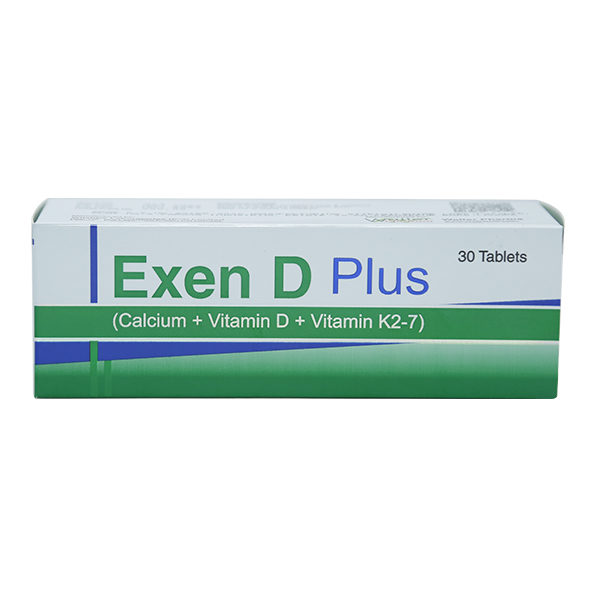
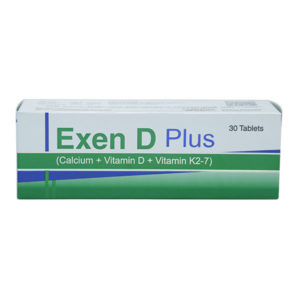
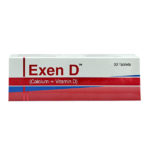
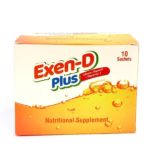

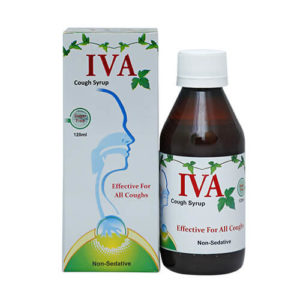
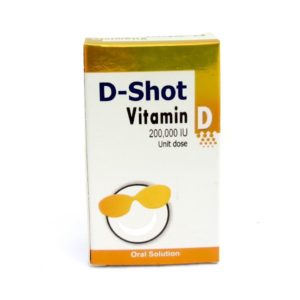
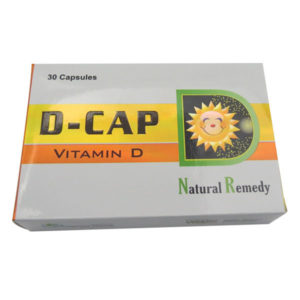
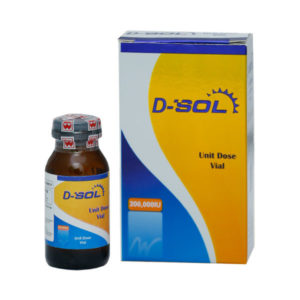
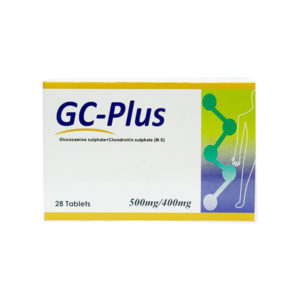
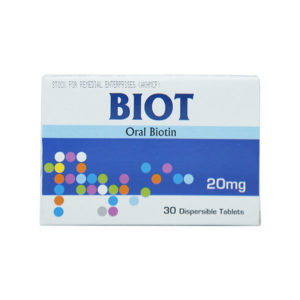
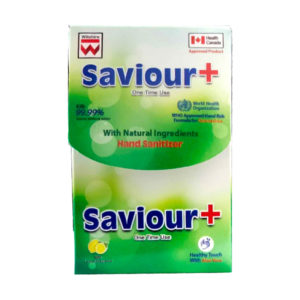
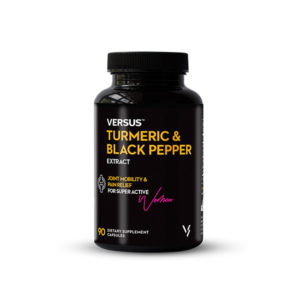
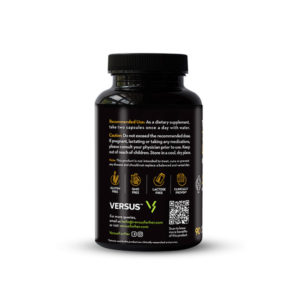



Reviews
There are no reviews yet.